
Are you on a quest for a perfect camera? With the right camera in hand, you can capture breathtaking landscapes, intimate portraits, and action-packed moments with stunning clarity. If you’re looking to elevate your photography, one of the most popular choices is the DSLR camera. In this guide, we help you navigate the world of DSLR cameras, other types of cameras, and essential camera accessories so you can decide which camera is perfect for your needs. We’ll also explore the key differences between a DSLR and mirrorless camera, helping you make an informed decision about your next photography investment.
Table of contents
- What is a DSLR?
- Which DSLR camera is right for you?
- Key features of DSLR cameras
- Other types of cameras
- DSLR vs. mirrorless
- Essential DSLR camera accessories
What is a DSLR and why you should buy one?
DSLR stands for Digital Single Lens Reflex. DSLR cameras boast a large digital image sensor that allows you to see exactly what the camera sees through its viewfinder. They offer greater control over your photos, enabling you to adjust settings and parameters to capture the perfect shot every time. Whether you are capturing family portraits, the intricate details of a flower, or the fast-paced action of a sports event, a DSLR can be your best digital companion.
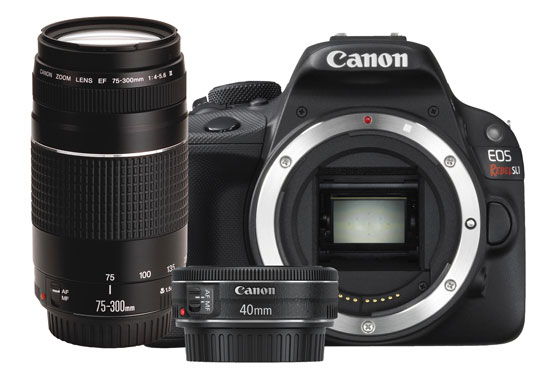
Which DSLR camera is right for you?
Selecting the right DSLR camera depends on your level of experience and your photography goals. Here’s a breakdown to help you choose the most suitable category:
Entry-level DSLR cameras
Perfect for beginners or those with a budding interest in photography, entry-level DSLRs are user-friendly and often come with features that help new users learn the ropes. They include features like automatic mode in which the camera analyzes the subject and adjusts settings accordingly, as well as preset scene modes to account for things like low light during a dark night shot, or blurred backgrounds for a portrait shot with depth. They are light and compact, making them less intimidating for new users. When ready, tinker around with the manual settings to get more comfortable with the device.
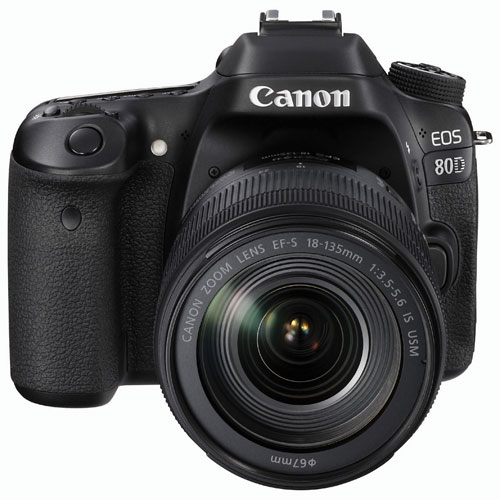
Enthusiast/mid-range cameras
A step-up from the entry-level, these types of DSLR cameras provide a little bit more control over settings. For someone with some photography knowledge, but not yet an expert, or just wanting a great camera for landscape and nature photos, a mid-range DSLR is a great option.
Professional-level DSLR cameras
Considering pursuing a career in photography, or find that it’s becoming a serious hobby? Once ready to enjoy the most advanced control and features, a professional-level DSLR is the way to go. They have full-frame sensors, and even more manual control than you’d find in a mid-range model. They may be a bit heavier and bulkier (particularly with specialist lenses attached to the bodies.) But there’s good reason, since these cameras are made for capturing photos in challenging situations. Features like weather-sealing ensure you can get that perfect wildlife picture while out on safari, or a beautiful scenic photo in the rain. Professionals often own more than one camera, and certainly plenty of lenses and accessories to suit various needs and situations. Popular camera brands like Sony, Canon, and Nikon are all available at Best Buy. For more guidance on finding the right camera, you can explore our comprehensive camera buying guide.

Key features of DSLR cameras
Understanding the key features of DSLR cameras can help you make an informed decision when purchasing. No matter which level DSLR you decide on, there are a few important features to consider:
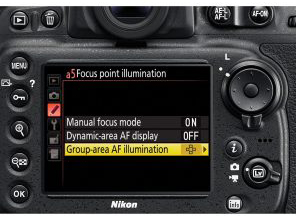
Sensors
The sensor of a DSLR is similar to 35mm film in a film-based SLR camera. Pressing the shutter button converts the image to an electronic signal, recording it to the memory card. A DSLR uses a CMOS (Complementary Metal-Oxide Semiconductor) sensor, which performs well in low light, ensuring beautifully-colored shots, and allows for a series of photos or video.
Megapixels
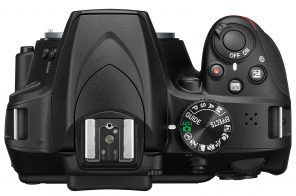
Every DSLR has a particular megapixel number, like 10MP or 12MP. A 12MP camera can produce a photo made up of 12 million pixels (i.e. tiny dots). The more dots, the greater the detail will be for a photo when it’s displayed or printed. Thus, you’ll only truly see the benefits of tons of extra pixels if you’re making really large prints or posters, or displaying the photos on a high-definition television or screen. Just like with pixels on a television, while the number is important, it doesn’t tell the whole story.
Image processor
The image processor in a DSLR converts raw data from the sensor into a final image. This affects the speed of shooting and the quality of the images, including colour accuracy and noise reduction.
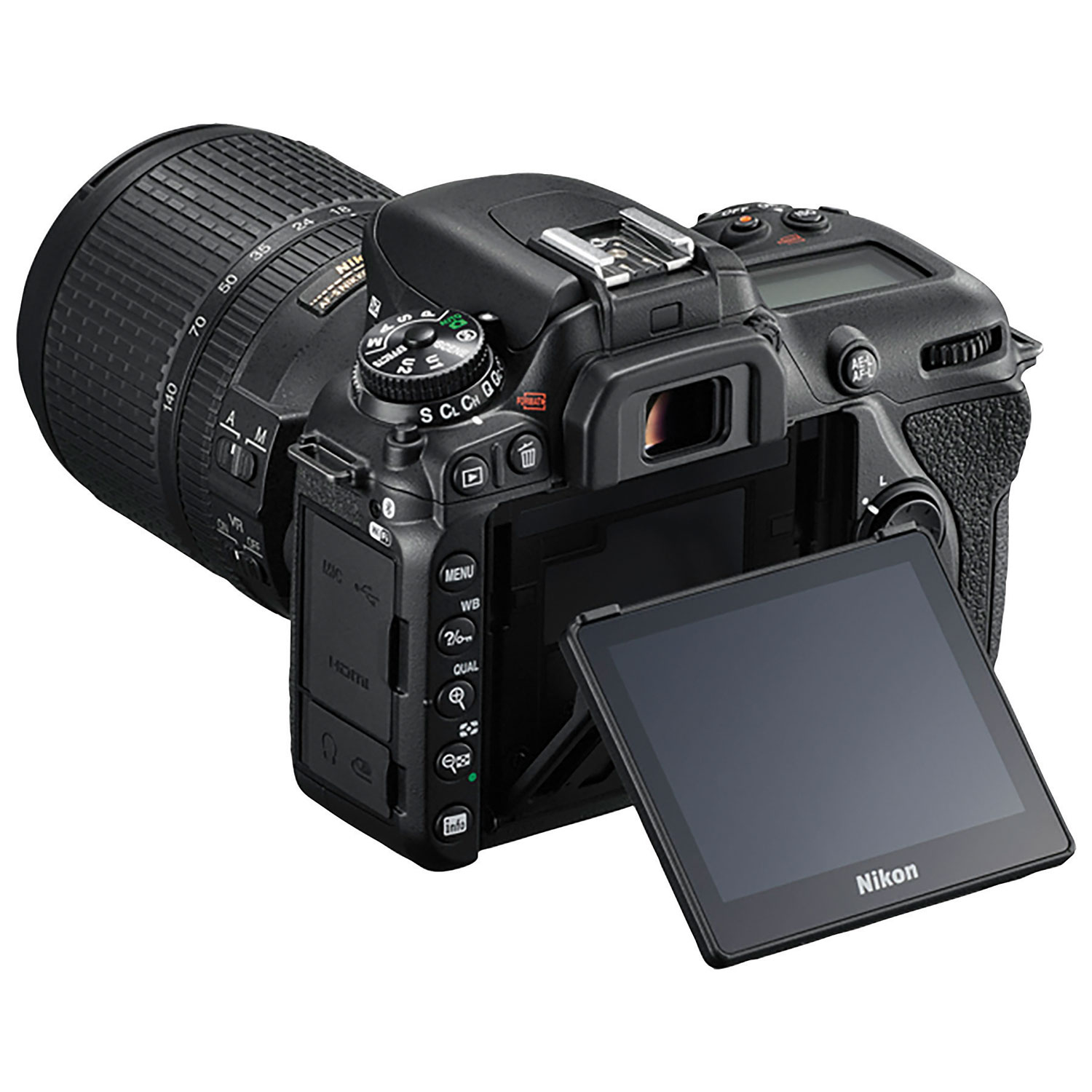
LCD screen
Chances are you use the LCD screen with a point-and-shoot camera to frame your shot. You can do the same with a DSLR that has Live View, though the LCD’s primary purpose is different. It displays essential photo information, such as settings, gridlines, aperture, and white balance. Once you’ve taken a shot, use the LCD to review it and zoom in on critical spots to ensure you have the needed resolution and detail. Most DSLR users leverage the viewfinder to take photos, much like in the pre-digital days.
Lens mount
Lenses on a DSLR can be twisted off and switched for others, based on your needs. This uses the lens mount, which often works with brand-specific lenses, though third-party lenses can also be attached, depending on compatibility.
Mode dial
Use this circular dial to adjust settings for the shot: selecting the Auto Mode if you want the camera to do the work for you and determine the right settings, Scene for preset Scene modes, like Portrait or Fireworks, or other manual options to tweak specific parameters.
HD video recording
Most, if not all, DSLRs can take high-definition video as well as still images. Typically, you’ll find a standard red “Record” button to initiate it, then press again to stop the recording. If you’re specifically interested in videography, you might find our article on how to choose a camera for shooting video very helpful.
WiFi/Bluetooth connectivity
While a memory card is always a necessity, some of the latest cameras boast WiFi and Bluetooth, allowing you to instantly and wirelessly transfer photos from the camera to a cloud storage account or device, like a smartphone or computer.
Other types of cameras

If you aren’t ready for DSLRs, there are alternatives to suit your tastes, needs, and budget. Some cameras are designed for special situations, even some that are waterproof so you can capture great shots in any weather, or even underwater for unique memories.
Mirrorless cameras
Also known as the Compact System Camera (CSC), mirrorless cameras include many of the benefits of a DSLR, but in a much smaller package. You still get a large sensor and the option for interchangeable lenses, but there’s no viewfinder and they are simpler to operate. They are great companions when you want to get awesome shots, but don’t want to lug a bigger camera along. If you want something better than a point & shoot but not quite a full-fledged DSLR, mirrorless is the way to go. For more information, check out our comprehensive mirrorless camera buying guide.
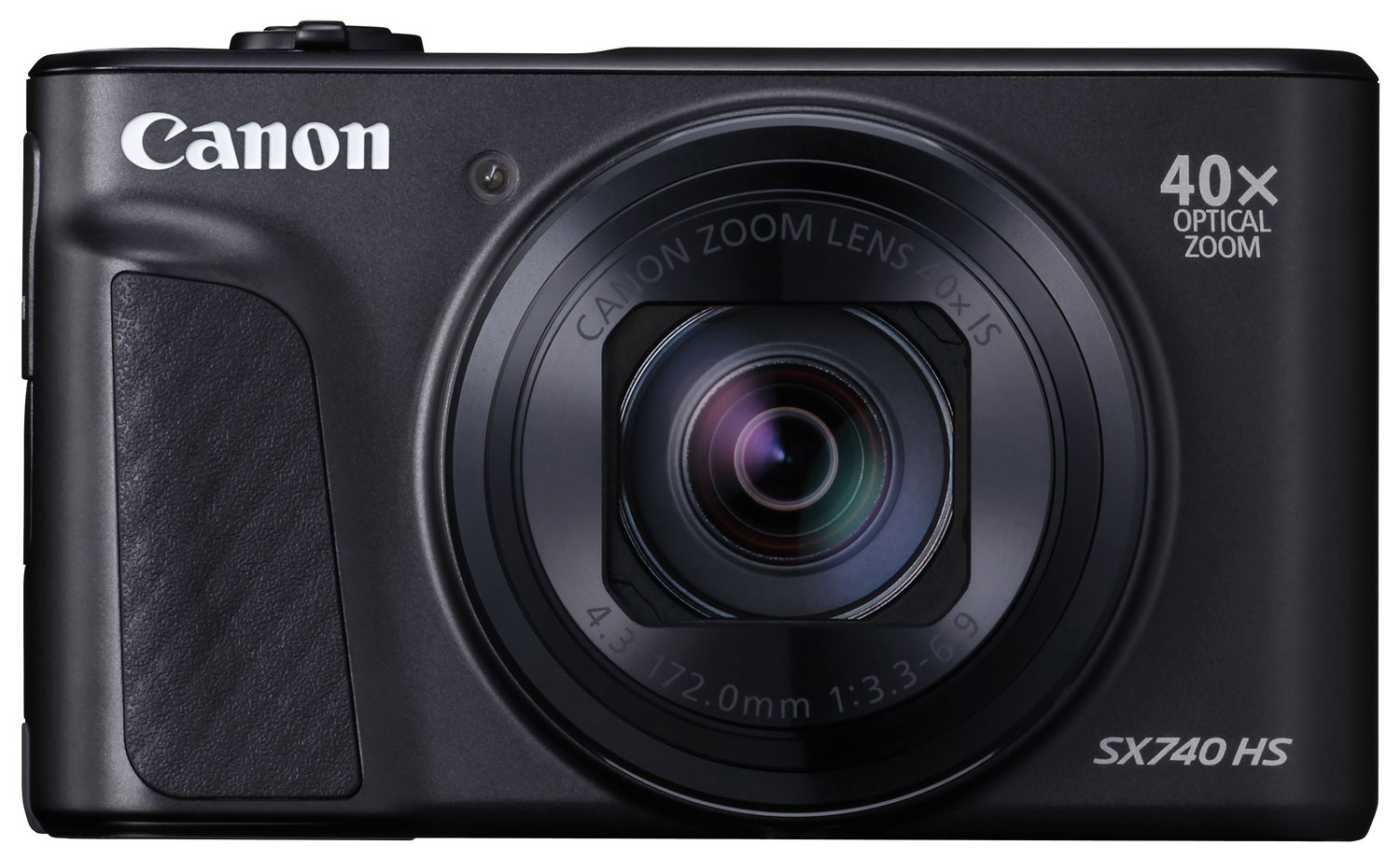
Point & Shoot cameras
As the name implies, with these types of cameras, you simply point and shoot. They are very compact and lightweight. Many include WiFi for instant uploading to social media or a smartphone. They often have rugged and waterproof housings, making them ideal for vacations or poolside use. Essentially, they complement smartphone cameras with slightly more photo control and a focus-free lens.

Instant cameras
Perfect for fun photos and kids, an instant camera is sort of like a throwback to the old days of film photography and Polaroids. They use self-developing film, allowing you to take a photo and print it instantly on instant colour film. Typically, you’ll get a small print, about the size of a credit card, that you can slot into your wallet, post on the refrigerator when you get home, or hand out at parties and events. They usually run on replaceable batteries. Select from a variety of brands including the popular Fujifilm Instax line of instant cameras.
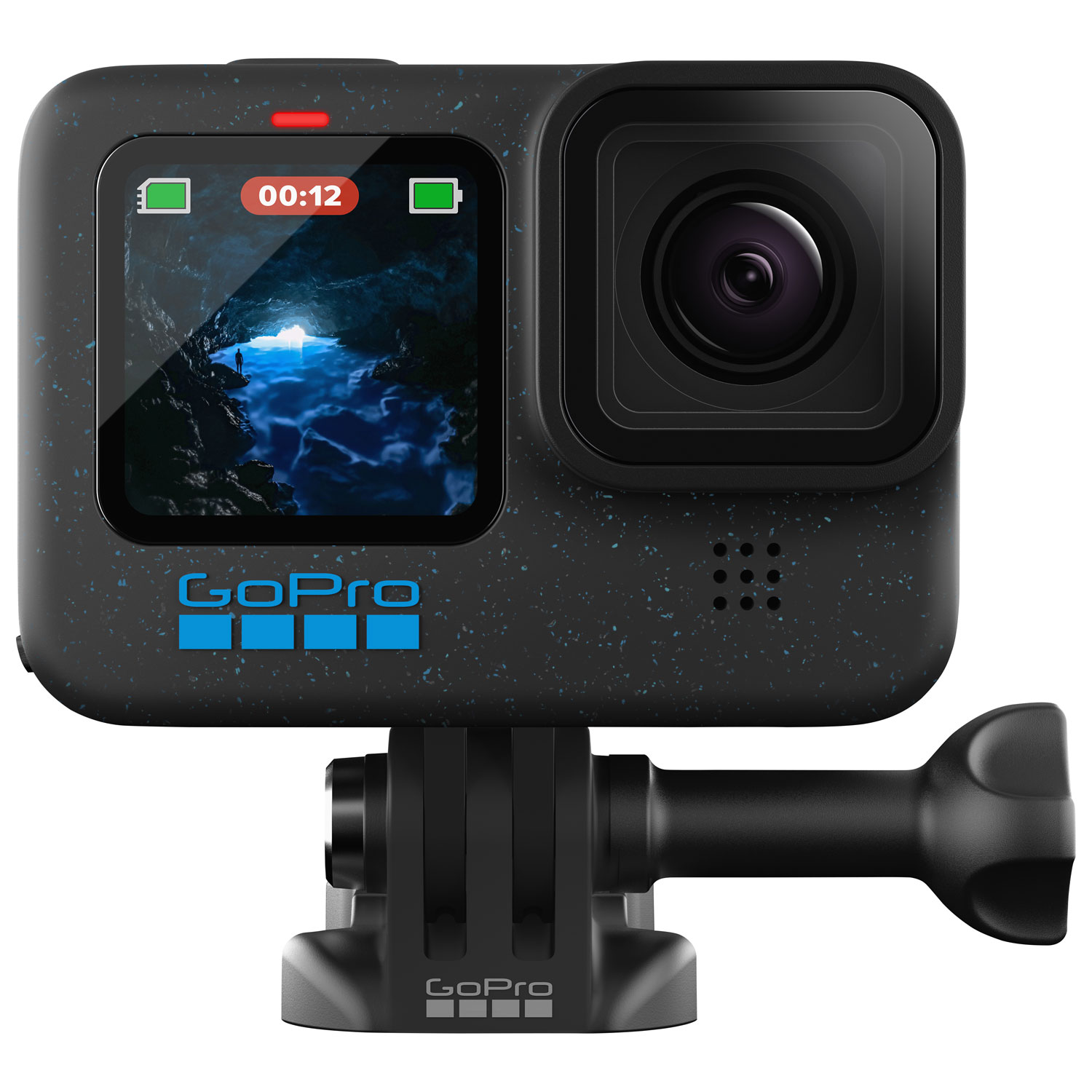
Action cameras and camcorders
If video is more your thing, consider a camcorder instead. Most can capture still images, but they focus on moving images, letting you record full-length videos with audio. You can add effects and stitch footage together on a computer to make share-worthy projects. Most new models capture video in full high-definition, for great playback on a large-screen TV.
Action cameras are flexible for capturing video in various environments that might damage a traditional camcorder. Popular ones include GoPro, wearable clips, and drones. Action cameras are ideal for sports enthusiasts and adventure-seekers who want a point-of-view perspective on their activities.
Geek Squad certified open box cameras
The perfect camera for you might be available at incredible cost savings at Best Buy’s Outlet. These cameras have been returned by customers for various reasons, thoroughly inspected, and Geek Squad certified. These open-box and refurbished cameras are fully functional, come with a warranty, and are available at great prices!
Difference between a DSLR and a mirrorless camera
When choosing between a DSLR and a mirrorless camera, it’s important to understand the key differences between the two types of cameras.
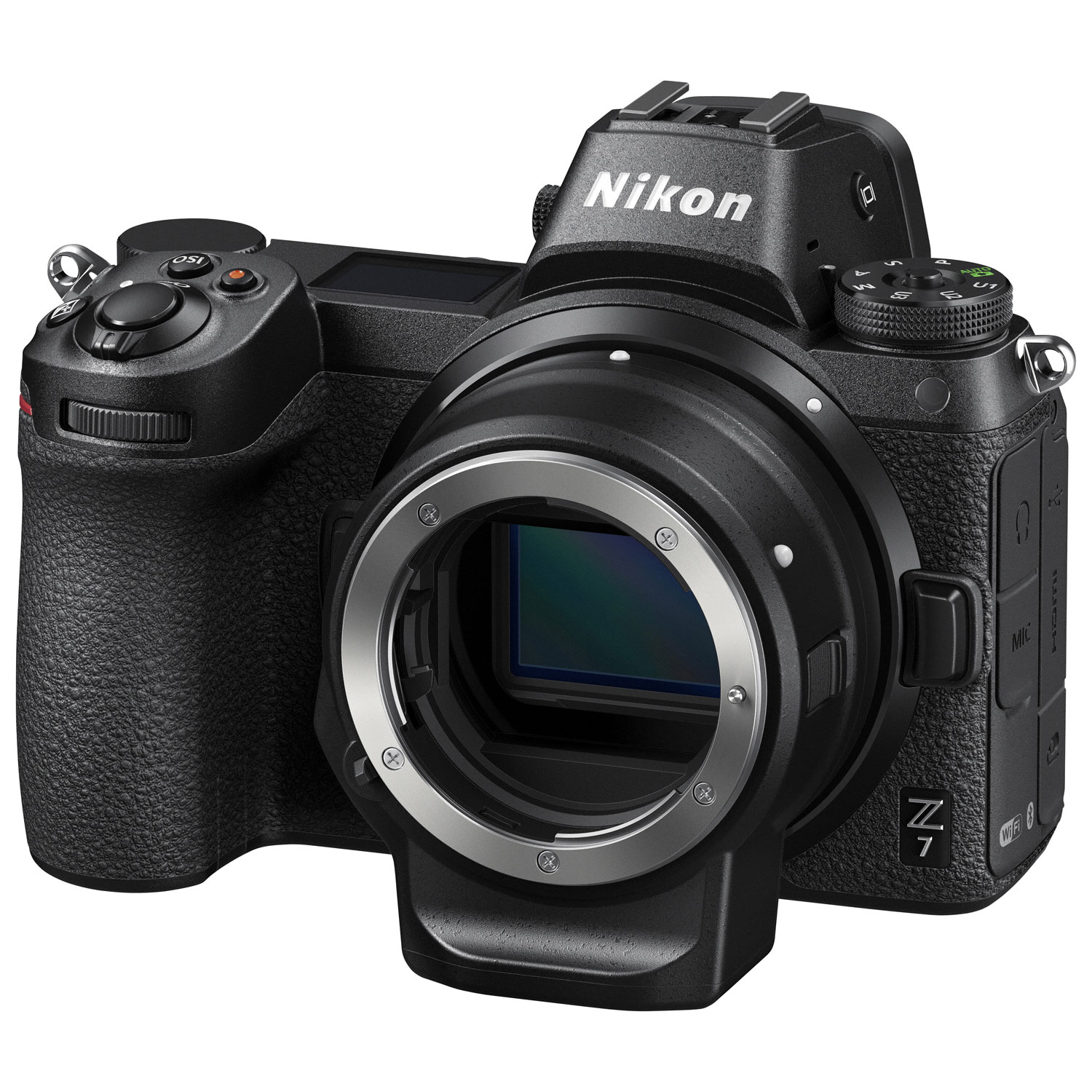
DSLR cameras use a reflex mirror to direct light to an optical viewfinder (OVF). Photographers see exactly what the lens sees, providing a real-time view without electronic delay. The autofocus system often uses phase detection, which is faster and more accurate for tracking moving subjects, making DSLRs ideal for action and sports photography. Additionally, DSLRs typically have longer battery life compared to mirrorless cameras, as they don’t need to power an electronic viewfinder continuously.
Whereas, mirrorless cameras, as the name suggests, do not have a reflex mirror like DSLRs. Light passes directly from the lens to a digital sensor. They use either an electronic viewfinder (EVF) or the rear LCD screen, instead of an optical viewfinder. The EVF displays extra information, including real-time exposure adjustments, enhancing the shooting experience. Initially, mirrorless cameras had contrast detection autofocus, but many modern models now have phase detection points on the image sensor, improving autofocus speed and accuracy. Without a reflex mirror and optical viewfinder, mirrorless cameras are generally more compact and lightweight than DSLRs, making them more portable and convenient for travel and everyday use. However, this also results in shorter battery lives due to the continuous use of the EVF and LCD screen.
Key differences at a glance
| Feature | DSLR camera | Mirrorless camera |
|---|---|---|
| Viewfinder | Optical Viewfinder (OVF) | Electronic Viewfinder (EVF) |
| Autofocus system | Phase Detection | Contrast Detection (with phase detection on many models) |
| Size and weight | Generally larger and heavier | Compact and lightweight |
| Battery life | Longer battery life | Shorter battery life |
| Real-time viewing | Direct optical view with no delay | Electronic display with potential minimal delay |
For a deeper dive into whether you should choose a DSLR, mirrorless, or point-and-shoot camera, read our detailed article on choosing the right camera type.
DSLR camera accessories
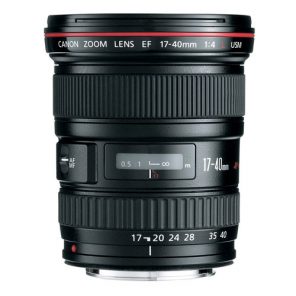
DSLRs are like smartphones: once you have your base device, you’ll need tons of accessories to complement it. Some are nice-to-haves, but many are must-haves. Here are key accessories that you won’t want to live without, and that will make a perfect gift for the photo enthusiast on your list.
Lenses
Topping the list is camera lenses, which, to eager photographers, are just as important as the camera bodies. There are a variety of lens types for different situations and to meet specific photographic needs, like portrait, wide-angle (great for scenic or stadium shots, for example), macro (for close-ups), and telephoto, which has a longer focal length if you need to capture subjects that are far away, like wildlife or sporting events. For more details on how to select the right lens, check out our camera lens buying guide.
Memory cards
You’ll need to store your large photo files somewhere once the camera snaps them. Memory cards are perfect for this. You can use them to store photo files and insert them into a card reader or a computer’s memory card slot to transfer photos to a hard drive or cloud account. Most DSLRs now use high-capacity SDHC memory cards, though some still use other formats like Memory Stick Pro or Compact Flash. Check what type of memory card is compatible, and get a few large ones that can hold a lot of photos.
You won’t want to go under at least a 4GB card these days, which can hold about 115 uncompressed photos taken at 10MP resolution, or about an hour’s worth of HD video footage. It’s always wise to carry a few extra memory cards with you. Memory cards, it’s worth adding, make perfect stocking stuffers.
Bluetooth/wireless remote
Some DSLRs that include Bluetooth and/or WiFi can work with a remote that lets you remotely control taking a photo. Set a camera down, stand in your position, then tap a button on the adapter to trigger the shot.
Flashes and lighting
If you don’t have enough light to get the shot you want, attach a flash to the camera’s hot shoe mount (grooves at the top) to alter or add more light where needed. A flash can also help reduce shadows, enhance skin tones, and prevent red-eye.
Filters
Filter types include polarizing, neutral density, diffusion, and UV, each of which can add a special effect to your photos. For example, a diffusion filter will soften the subject, while a polarizing filter can do things like darken bright skies or suppress glare from water. Filters also do double duty in helping prevent damage to the lens from things like scratches or dust.
Lens hoods, caps, adapters, converters
A lens hood attaches to the front of the lens, helping to shield it from the light, and prevent glare if you’re shooting outside or in a place with bright, artificial light. A lens cap simply protects the lens from dust and scratches—pop it onto the lens whenever you’re not using the camera.
An ideal gift for the enthusiast photographer who’s looking to add some creativity to his shots, a lens adapter is a fitted, threaded ring that lets him connect a specific lens, like a vintage one, to his new camera in the event that they would otherwise have been incompatible.
Tripods and monopods
While all DSLRs have image stabilization to prevent blurry photos, you still need something to keep the camera steady. For perfect night shots or fast-moving objects, a tripod is essential. It is a three-legged stand that secures the camera for blur-free images. A monopod is a single stick that steadies the camera. Every photographer will appreciate a tripod as a gift.
Battery grip
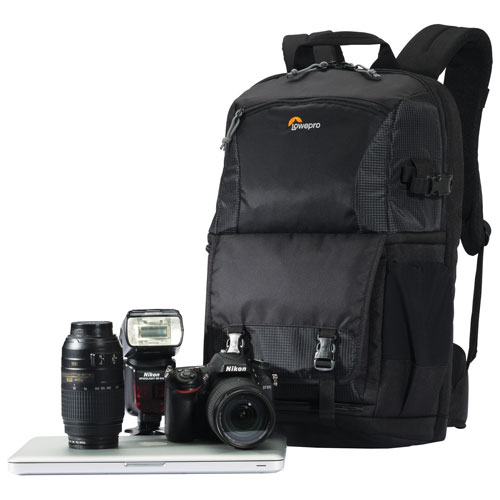
For long photo expeditions or events, an extra battery is handy. A battery grip attaches to the camera and holds extra batteries for easy swapping, so you can keep shooting.
Bags, cases, and backpacks
There’s a plethora of photography-specific camera bags, cases, and backpacks. Photo enthusiasts often have multiple bags for different situations—vacation, photo expedition, or stroll with a camera. Each has compartments for a camera body, extra lenses, and accessories, plus pockets for personal items. They offer easy access and often include weather protection. A DSLR owner can never have too many bags!
While the diversity of accessories is not as wide for other camera types as for DSLRs, many accessories still apply. These include bags, cases, memory cards, Bluetooth adapters, tripods, and monopods. Additionally, you can consider straps and mounts for action cameras and camcorders, and special waterproof housings. All of these make ideal gifts for any digital camera owner.
Take the next step
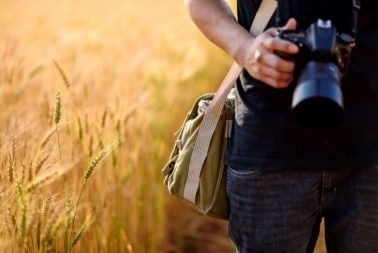
Best Buy offers a wide selection of digital cameras and lenses in all of these categories, as well as accessories to suit various photography needs. Unleash your creativity and capture every moment with the perfect gear from Best Buy. Shop now and turn your vision into reality!









Hi! Thank you so much for the post.
I’m into landscape photography which means I would require a wide angle lens (16mm or below) but in general, kit-lenses are 18-55 only. I’m also into film-making and the wide angle lens would help in that too. Another thing I’m concerned about is the camera capability for the video recording like a live viewfinder, AF points, and stabilization. I’ve heard that Nikon images are good but not for video recording, The opposite goes for canon. Please suggest a camera (or setup to buy wide angle lens separately)under 500 dollars.
Hi Aakash,
I sent your question to the Digital Imaging team at Best Buy and they sent this suggestion:
The new a6400 would be a great camera with 4K video plus the lens they want I’d suggest Sony SEL16F28 (10148921) 16mm F2.8 Lens at $349.99.
Best regards,
Martin
Me pueden proporcionar el precio de la cámara Canon 5ds y 6ds. Porfa.
Comments are closed.